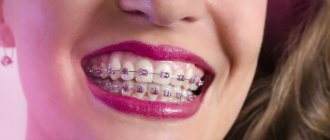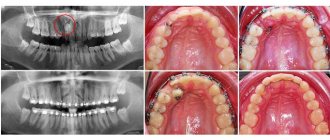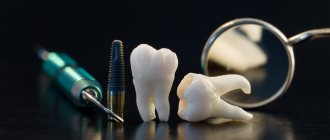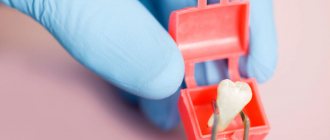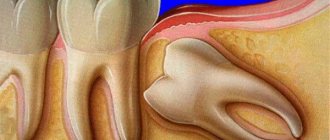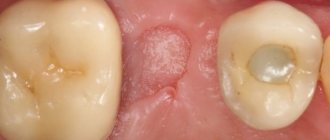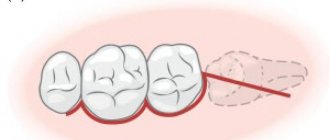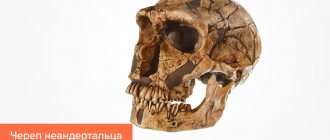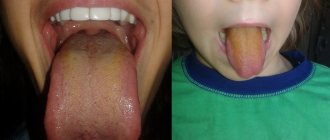45375
The most difficult thing for a person to do is to erupt so-called wisdom teeth. Their peculiarity is that they appear already in adulthood - from 17 to 40 years old, for which they received such a name.
Very rarely this process is painless. After all, the jaw is already fully formed, and the skin on the gums is much stronger than in infancy. Therefore, even if a person is not bothered by severe pain, he still feels slight discomfort.
Almost all people experience some kind of unpleasant sensations during the eruption of wisdom teeth, often even very strong ones . If you ignore them or try to treat the pain on your own, this can lead to serious complications.
Therefore, it is advisable to know what symptoms accompany the eruption of wisdom teeth, so that if necessary, consult a doctor in time.
Peculiarities
In principle, “eights,” as dentists call them, are no different from other molars. They also consist of a root, neck and crown covered with enamel.
But due to their unusual location and late eruption, they still have some features:
- the most important reason why these molars appear so painfully is that they come in right away, without baby teeth ;
- since they are located at the edge and remain in a “sleeping” position inside the jaw for a long time, they often have a curved root ;
- “eights” are not clamped by other teeth on both sides, so they can grow not vertically, but to the side ;
- but due to the late appearance, there is no room left for them, so during the process of eruption they can “push” neighboring teeth, and this is quite painful ;
- sometimes they “come out” not immediately, but little by little over a very long time. It also happens that they do not have time to fully erupt and are destroyed in the gums.
Let's find out which fully removable dentures are the best according to reviews from dental patients.
Let's find out here: https://zubovv.ru/protezirovanie/nesemnyie-p/viniryi-np/na-zubyi-tsenyi-dlya-patsientov.html prices of dental veneers.
In this review we will tell you how long you need to wear braces.
A short video about the features of wisdom teeth:
Treatment and diagnostic measures
Atypical removal 38. partial removal of bone tissue in the 38 area, its segmentation with a low-speed rotating instrument.
The operation is cooled with a solution of furacillin. Tooth extraction is successful and complete, lasting 6 hours 15 minutes. Anesthesia ubistezin 4%. number of anesthetic injections: 4 x 1.7 ml. (torusally). An osteotropic material (collapan) was introduced. The wound is sutured.
Removal, despite the complexity, is gentle and therefore long-lasting. X-ray after tooth extraction is all within normal limits. After surgery, the patient received prophylactic AB therapy, NSAIDs and hypertension.
The most common signs
- Most often, a person experiences pain in the jaw .
This is due to the fact that the “eight” makes its way up through the bone tissue. And by this age the jaw is already fully formed. That is why this process is so painful. The pain can be barely noticeable, but it can also be so severe that the patient loses consciousness. - Inflammation of the gums is very common . This can also be explained by the fact that the wisdom tooth breaks through them, breaking through the skin.
- A little less often, pain and swelling is observed not only in the growth area, but also in the surrounding area of the mucous membrane, cheek and tongue . It can even cause pain and difficulty swallowing, ear pain, and head pain.
- Sometimes the erupting tooth is covered with a kind of “hood” of overgrown mucous membrane.
Under it, food debris accumulates and bacteria multiply. This process not only leads to soreness and swelling. Bad breath and difficulty swallowing appear . - In more severe cases, a person may experience general malaise and symptoms of intoxication . His submandibular lymph nodes are enlarged, his temperature rises to 40 degrees and his head hurts .
- Rarely, but still there are pains in the ear, neck and throat that accompany the eruption of the figure eight.
These symptoms are purely individual. A person can experience them all at once, or just one. They can also vary in intensity and duration.
Treatment
The objectives and methods of treating pericoronitis depend on the characteristics of the disease in each specific case.
Dental treatment of pericoronitis
The doctor usually performs the following procedures:
- Excision of the gingival hood. The crown is exposed, allowing the tooth to fully erupt. This method is appropriate only if the tooth is in the correct position and does not interfere with others.
- Removal of an erupting tooth. This is done with wisdom teeth, which are most often dystopic. Since the “eights” can only take on 2% of the chewing load, there is no point in preserving them.
- Laser therapy. This modern method helps relieve inflammation and swelling by exposing tissue to an infrared ray. The therapy lasts 7-10 days and has the only contraindication – oncological processes in the oral cavity.
Treatment of pericoronitis at home
Treatment at home
At home, treatment of pericoronitis is carried out only after dental procedures and is aimed at:
- Relieving inflammation. All patients are prescribed warm rinses with solutions of furatsilin or potassium permanganate, soda-salt solution, decoctions of medicinal herbs (calendula, sage, chamomile, etc.). The introduction of an iodomorphic tampon under the gingival hood is also indicated.
- Relieving pain syndrome. If necessary, dentists recommend taking analgesics (Ketanov, Baralgin, Nimesulide, Tempalgin, Nurofen).
The result of treatment depends not only on the form of the disease and the timeliness of visiting a doctor, but also on the qualifications and experience of the dentist. Our website provides a list of clinics that successfully diagnose pericoronitis in the early stages and treat it effectively.
Signs associated with gum disease
To one degree or another, it develops in all people when the “eight” appears. The most extreme position in the dentition leads to the formation of a “hood” of mucosal tissue.
After eating, food debris accumulates there, and with normal hygiene procedures it is very difficult to remove them from there. Therefore, bacteria develop in this pocket , causing an inflammatory process .
For some people, it is almost painless and goes away on its own. But quite often various complications appear. During chewing the gums can become damaged , bacteria enter the wound, and inflammation develops into pericoronitis .
Ulcers appear on the cheek and oral mucosa, which cause severe discomfort and cause the development of stomatitis . An abscess may form on the gum due to infection.
In case of problems with the upper molars, the inflammation can spread to the trigeminal nerve, which causes severe unbearable pain. The lower teeth cause complications on the tonsils and throat. Often, there is an increase in temperature and enlargement of the lymph nodes.
What is dystopia
Let's look at what a dystopic tooth actually means.
This is what they say if it grows incorrectly, with abnormal deviations. It can be tilted to the side, and then you have to deal with vestibular dystopia. Other types of this anomaly include medial and distal - if the tooth protrudes strongly forward or goes back, respectively. There is also such a thing as tortoposition - in this case it will be rotated around its axis.
To understand what this phenomenon looks like in real life, take a look at the photo below.
The photo shows a dystopic tooth
Thus, dystopia is one of the types of malocclusion. It can affect either one tooth or the entire row. The sooner parents begin to treat such pathologies in their children, the easier and faster the problem can be solved.
Now let’s look at what an impacted tooth means. This concept means that the element has formed, but has not fully erupted or even appeared above the gum. If you look at the picture below, it will be clear what we are talking about.
The photo shows the impaction of a wisdom tooth.
The impacted element may not fully erupt, that is, remain inside the bone tissue, or appear as one edge of the crown. In this case, it is customary to talk about complete or partial retention, respectively.
Important! One pathology does not exclude the other: a tooth can be both impacted and dystopic. This phenomenon is often diagnosed in relation to wisdom teeth.
Is it possible to predict the occurrence of the defects in question? Today, dental experts note that the most common cause of this disorder is a genetic factor. However, even in the absence of a hereditary predisposition, the risk of encountering a similar problem still remains. Among the provoking factors are the following:
- absence of neighboring units,
- overstaffing,
- injuries due to which the bite was disrupted,
- pathologies during the formation of primordia,
- pathologies of jaw development,
- premature loss of milk units,
- connective tissue diseases.
When choosing a treatment method, the doctor takes into account the medical history. In some situations, simple removal may not be enough. Most bite defects require complex therapy.
Such teeth can cause discomfort
A completely closed impacted tooth sometimes does not cause much concern and is often detected only during hardware examination. Meanwhile, in the area of its contact with neighboring tissues, cervical caries, pulpitis, periodontitis can develop, in some cases, follicular cysts, inflammation and suppuration are formed. Doctors identify characteristic signs of retention that should be paid special attention to: protrusion of the gums and a “gap” in the alveolar arch.
Tilted dystopic teeth often lead to injury to the inner surface of the cheeks, lips and tongue.
The constant presence of open wounds on the mucous membrane is a direct path for microbes and infection, so often such bite defects become the root cause of the development of inflammatory processes in the soft tissues.
Often, gum pockets form above the part that remains hidden under the gum, in which pathogenic bacteria actively multiply. In some situations, such problems lead to impaired diction and chewing function.
Photo of an x-ray of a child's teeth
How to understand that a tooth is impacted or dystopic? Most often, the defect can be seen with the naked eye, because such anomalies usually cause serious aesthetic damage to the smile. If you suspect any misalignment of a tooth, you should consult a specialist. For diagnostic purposes, doctors use hardware research techniques - radiography, orthopantomography, computed tomography.
Attention! Most often, wisdom teeth and canines are affected by dystopia. The most rare are dystopic incisors, and such cases cause the greatest discomfort to the patient1.
Sometimes, due to retention and dystopia, wounds, ulcers, and inflammations form on the gums. Touching surrounding tissues becomes painful. If such symptoms appear, you should immediately seek help from a specialist - only a doctor will be able to identify the form of the anomaly and determine the cause of its occurrence.
Treatment of retention and dystopia usually comes down to the use of a combination of individually selected procedures. In childhood and adolescence, some disorders are corrected with orthodontic techniques, including corrective plates and braces. Prosthetics are more often used to treat adult patients.
In childhood, it is possible to correct the bite with braces
However, it is often necessary to resort to surgical exposure of the defective tooth or its removal. As a rule, such decisions are made in relation to impacted eights - they are quite difficult to treat, and their functional load is minimal. Abnormally located elements of the dentition are unconditionally removed in case of complications, as well as in cases of high risk of damage to neighboring units.
Features of surgical intervention depend on the specific situation. Sometimes, if the impacted tooth is large enough, its removal is performed in several stages. After the procedure, medication is applied to the open wound, and the incision on the gum is sutured.
“I was looking for a surgeon to remove a wisdom tooth that not only had not erupted, but was also rotated around its axis.
Moreover, the therapist first told me that I wouldn’t touch him, otherwise you’ll become numb and swollen... Can you imagine?! I left upset, then, based on reviews, I found a wonderful doctor who did a brilliant job with the removal.
In general, if you have a similar situation, don’t delay! You can’t fix the problem on your own!”
Yana, Moscow, fragment of a message on a thematic forum
Sometimes wisdom teeth have to be removed
When removing an unerupted element, you have to remove the area of the gum under which it is hidden. If the atypical tooth is completely covered with bone tissue, then a bur is used. Then the edges are smoothed, and the wound is treated and sutured. During the procedure, the surgeon may use a scalpel or laser.
Sometimes a doctor may decide to remove not an abnormal tooth, but a healthy one - if this allows the dystopic one, which is preferable to be preserved, to grow correctly. This is often done in case of canine pathology.
The rehabilitation period can be quite difficult. Unless your doctor prescribes another option, you must adhere to the following rules:
- During the first 2-4 hours after surgery, it is not recommended to drink, eat, rinse your mouth, smoke,
- At this time, special attention should be paid to regular oral hygiene,
- do not use mouthwashes during the first three days,
- give up sports for at least a couple of days after surgery.
Also, the doctor often prescribes antibiotics and painkillers, and treatment of the cavity with chlorhexidine. To avoid complications, the patient must strictly follow all the specialist’s recommendations.
Swelling after tooth extraction may continue for several days.
In some situations, swelling occurs after surgery. This phenomenon is considered normal if the symptom gradually disappears - in the normal development of the situation, swelling should go away within a week. Slight bleeding from the wound is also possible. To stop it, a special medicine is applied to the hole.
Prolonged bleeding, numbness, discomfort when opening the mouth, inflammation, damage to neighboring areas are reasons to immediately consult a dentist.
Prices for treatment, as well as the removal of abnormal teeth, consist of a number of factors and depend on the degree of complexity of the pathology, possible concomitant treatment, the qualifications of the surgeon and the pricing policy of the dental center.
We suggest you read: When do newborns start teething?
The cost of removing an impacted element can reach 6,000 rubles. Please note that you will have to pay separately for an x-ray examination.
So, a photograph of one tooth will cost about 350 rubles, while an orthopantomogram will cost 1000-1200 rubles.
The curved position of individual elements of the jaw system is a phenomenon that usually does not arise abruptly and out of nowhere. Therefore, parents from an early age need to carefully monitor the process of growth and formation of the jaw apparatus of their children. The sooner the anomaly is detected, the easier it will be to solve the problem, perhaps even without resorting to surgery.
- Danilova M.A., Tsarkova O.A., Khalova Yu.S. Duration of treatment for impaction of individual teeth depending on the degree of complexity, 2003.
Signs that the “eight” is growing sideways
Incorrect position of the molar relative to the jaw is called dystopia. This is due to the lack of space for it. How do you know if a tooth is growing to the side?
- if the “eight” is directed towards the cheek when cutting through, this can cause injury to it when chewing food and talking, as well as ulcerative lesions of the mucous membrane, up to the formation of ulcers and even a malignant tumor;
- a change in bite occurs, a person experiences difficulty chewing food and constantly injures the tongue;
- sometimes the third molar is directed with its apex towards the adjacent teeth. In this case, as it grows, it rests against them and causes curvature. The crown is also destroyed. All this causes severe pain and a feeling of pressure in the jaw;
- if the “eight” is only slightly tilted towards the neighboring teeth, this can cause a shift in the entire dentition, their curvature and a change in the bite;
- A frequent symptom of dystopia is also fever and inflammation of the lymph nodes.
Signs of an unformed eight
It also happens that the last molars never appear. They remain in the jaw or under the gum tissue . This is the so-called tooth retention. It can be observed for several years without disturbing the person.
But most often the last molars put pressure on the neighboring ones and cause their destruction. This is accompanied by severe pain not only in this place, but throughout the jaw, gums and even in the throat.
An undetected “figure eight” can cause severe complications. Often the patient cannot associate the deterioration of the condition, headaches and inflammation of the tonsils with the problems of the wisdom tooth.
Impacted wisdom tooth
This is the name of a tooth that has not erupted and is located inside the jawbone or under the gum. He behaves differently: either he does not bother him at all, or he becomes a serious problem. A dystopic tooth can put pressure on the roots of a neighboring tooth, which leads to their resorption. This manifests itself in the form of pain in the head, jaw, ear or throat. If such pain is constant and the tooth is still not visible, it’s time to go to the doctor. In this case, if the eighth tooth is not removed in time, it is easy to lose the one next to it.
Complications due to improper eruption
Pericoronitis
This is the most common complication associated with incorrect or incomplete eruption of wisdom teeth. It is characterized by inflammation of the jaw tissue, and sometimes the cheek and oral mucosa.
How to determine that pericoronitis is developing?
- severe swelling and redness appears in the gums;
- inflammation can spread to the cheek, temple and even throat, causing painful and difficult swallowing;
- if swelling spreads to the jaw muscles, this can lead to problems opening the mouth;
- your health deteriorates, weakness develops and the temperature rises;
- When pressing on the gum, pus is released.
Sometimes this process becomes chronic. This is characterized by thickening and soreness of the mucosal tissues. Sometimes fibrous tissue or an abscess forms at this site.
Caries
This is also quite common on the last molars. Because of their awkward position, they can grow too close to adjacent teeth, allowing food debris to accumulate in the space.
Caries develops with all the accompanying symptoms: pain, sensitivity and blackening of the enamel . Moreover, the disease often spreads to adjacent teeth. It also happens that the “eight” is already sick, having become infected with caries in the gum.
Periodontitis
This disease develops after the “eight” has erupted. The inflammation is due to the fact that the wisdom tooth is located in a very inconvenient place. With regular cleaning, it is almost impossible to completely remove plaque and food debris from it.
Bacteria begin to develop between the gum and crown, as well as in the interdental space. They cause pain, swelling and inflammation . Over time, it can develop into periostitis, better known to everyone as gumboil.
The patient's temperature rises, the cheek swells and becomes painful . Inflammation and swelling can spread to half the face or go deeper into the jaw bones.
All this is accompanied by a deterioration in general health, severe pain and intoxication of the body.
Cyst
This is a benign neoplasm on tooth tissue. A cyst develops due to the long process of eruption and the presence of chronic inflammation. A sac is formed filled with fluid, dead tissue and food debris.
This process can be noticed by protrusion of the gum area to the side and severe pain . The pain sometimes radiates to the throat or ear.
Inflammation of the trigeminal nerve
If there are problems with the figure of eight in the upper jaw, the facial nerve may be affected. This is immediately noticeable by the trembling of the facial muscles, soreness of the skin in this place and severe sharp tugging pain .
The face may become distorted . In difficult cases, paralysis of the facial muscles .
Abscess
This is a serious purulent disease that appears in very patient patients. The development of an abscess near the root causes the following symptoms:
- severe throbbing pain;
- bad breath;
- constant feeling of bitterness;
- swelling of the gums, cheeks and even neck;
- temperature increase.
What temperature is considered dangerous for a child teething at 1 year of age?
Let's look at the photo here and find out what oral leukoplakia is.
Here: https://zubovv.ru/ortodontiya/breketyi/skolko-stoyat-na-zubyi-dlya-korrektsii-prikusa.html - we’ll find out how much it costs to put braces on a child’s teeth.
Phlegmon
If the purulent infiltrate does not have clear boundaries, or an abscess has broken through into the soft tissue, an extensive inflammatory process . It can seize the bone, spread to half the face and even lead to death from blood poisoning.
How do you know that such a complication is developing?
- severe swelling affects the chin, cheek and eye;
- the pain is such that it is impossible to chew, swallow, or speak;
- there is increased salivation and putrid odor from the mouth;
- the temperature rises sharply and signs of intoxication appear.
Submandibular lymphadenitis
A person's lymph nodes become inflamed when there is an infection in the body. Therefore, if the wisdom tooth erupts incorrectly, causing swelling and the development of bacterial flora, lymphadenitis may appear.
In this case, one or both lymph nodes increase in size , the tissue in this place is red and painful.
You should be attentive to any painful manifestations in the mouth. You should not try to get rid of pain and inflammation on your own.
The eruption of wisdom teeth is a complex process. And failure to see a doctor in a timely manner can lead to dire consequences.
If you find an error, please select a piece of text and press Ctrl+Enter.
Tags wisdom tooth teething symptoms
Did you like the article? stay tuned
Preventive measures
Prevention of problems that may arise during the eruption of wisdom teeth consists of the following steps:
- Proper cleaning of teeth from plaque, regular oral hygiene, a gentle toothbrush;
- Careful brushing during teething so as not to damage the mucous membrane of the “eights”;
- Rinsing the mouth with antiseptic preparations when a tooth appears;
- Regular dental checkups.
Most often, problems arise with the lower wisdom teeth, so you need to carefully clean them of food debris. If you experience severe pain or high fever, you should consult a doctor. Before going to see a dentist, you should not take painkillers, as this may distort the results of the examination.
